By Mariana Llamas-Cendon from the November 2009 Edition
Three contemporary Mexican artists: Luis Morales, Jorge Diaz and Josefina Barroso will present their latest production at ContemXarte, an art show open to the public that will take place at the lobby of the Camino Real Hotel from December 1 to 15. Approximately 21 works of art will be shown, with an average price from $1,000 to $3,000 USD.
The “combo”
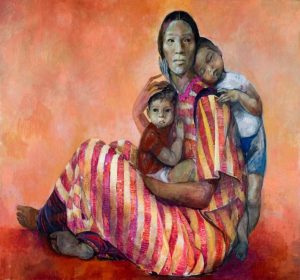
Luis Morales, a painter from the state of Oaxaca, a graduate from La Esmeralda one of the most recognized art schools in Mexico, which as founded by Diego Rivera among other important artists- is a renowned artist who has exhibited his artwork all over the world in such places as: China, Italy, Peru, and Iran, to mention a few. The City of New York also boasts a mural painted by Morales on Fifth Avenue in what used to be the headquarters of the Mexican Banco Somex.
Luis’s art is rich in colors and textures, but it’s the content of his paintings what makes him unique. Morales is an observer of human life, where he finds his inspiration through the array of emotions and feelings, which range from the basic as he expresses on his collection of paintings dedicated to maternity- to the most tortuous ones. Maybe that is the reason why one of Morales’s passions is to stroke the essence of a person on canvas.
“Portrait allows me to discover someone. Portrait allows me to discover someone else’s essence and capture it eternally on a canvas,” Morales said”. Besides constantly creating a plethora of paintings, Luis is currently working on an erotic theme box collection. Eroticism as Morales perceives it has nothing to do with the exaltation of sex or the emphasis on sexual organs: It is an attitude common to all of us. For instance, some of the “erotic” symbols he uses are watermelons and cats.
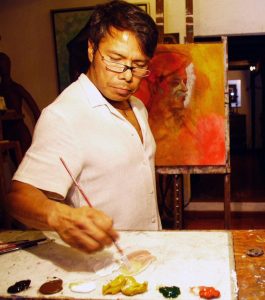
“Eroticism can be shared with everybody. The genital part of it gets commercialized and its intention is to provoke the sexual arousal with a profit in mind,” Morales said. “The wonder of eroticism comes from the fact that one can travel to countries you have never been to, meet characters you have never seen before but you make them current”.
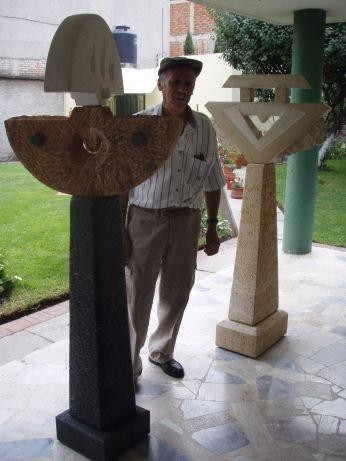
Along with Luis Morales, Jorge Diaz will display part of his vast artwork. Diaz, originally from the state of Michoacan and also a graduate from La Esmeralda, has dedicated his life to turn simple stones into symbolic art.
This distinguished sculptor has found his personal signature by adding a cosmic reference entwined with an erotic element to his work.
It was after becoming a witness of a total solar eclipse in July of 1991 that the universe changed his work. “I started working on what is today a great part of my art work: eclipses, suns, moons, etc. …,” Diaz said. But he also recognizes that the erotic element of his work is, by no means, evident or coarse; it is actually symbolic and represented through lights, orifices and shadows. “I try to drill holes through which the light will cross, reaching certain spots within or without the sculpture,” Diaz said.
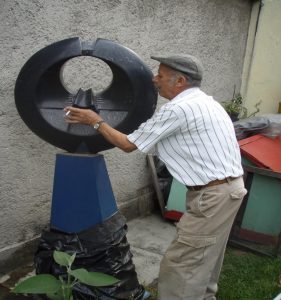
“The light, therefore, is turned into an erotic element”. Nevertheless, his sculptures are decorative and functional while also allegorical. “My pieces are able to spin around so the light can go through. They can be moved daily, following the Earth’s movement,” says Diaz. “It is planned and designed in such a way that a moon halo or something else gets lit. It is a way of playing with the shape, the content, things, or just to say something”.
The last but not least is Josefina Barroso, a photographer from Mexico City and an ex-alumna of Brooks Institute -one of the most famous photographic schools in the U.S., who was reluctant to give up her life to photography because of the bad financial reputation this career has. Nowadays, Josefina, known by her friends as “Finu”, is now a flourishing artist behind the lens thanks to what she calls “impossible landscapes,” which are images loaded with symbolism, emotions and feelings that live within the human soul.
“The light, therefore, is turned into an erotic element”. Nevertheless, his sculptures are decorative and functional while also allegorical. “My pieces are able to spin around so the light can go through. They can be moved daily, following the Earth’s movement,” says Diaz. “It is planned and designed in such a way that a moon halo or something else gets lit. It is a way of playing with the shape, the content, things, or just to say something”.
The last but not least is Josefina Barroso, a photographer from Mexico City and an ex-alumna of Brooks Institute -one of the most famous photographic schools in the U.S., who was reluctant to give up her life to photography because of the bad financial reputation this career has. Nowadays, Josefina, known by her friends as “Finu”, is now a flourishing artist behind the lens thanks to what she calls “impossible landscapes,” which are images loaded with symbolism, emotions and feelings that live within the human soul.

“I have a picture that I love, in which a friend is on the beach inside a prison. To achieve it I first had to take photos of the chain and then of my friend, to thereafter play with photoshop possibilities,” Barroso said.
Josefina is not at the point where she can live at large from her artwork, so part of her work is dedicated to commercial and product photography. “I would like to have a broader personal work, but on a day to day basis I am trapped between rent and expenses,” she says.
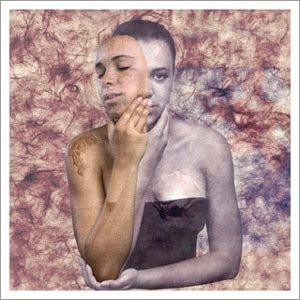
Furthermore, Barroso is currently experimenting with different techniques: One of them includes submarine photography.
“I saw a lot of possibilities, and it is really hard to get the right exposure while fighting the surf.”
We hope that you enjoy this, our Premiere Edition of Manzanillo Sun E-magazine. Please contact us with your comments and suggestions for future editions. ian@manzanillosun.com
Download the full edition or view it online
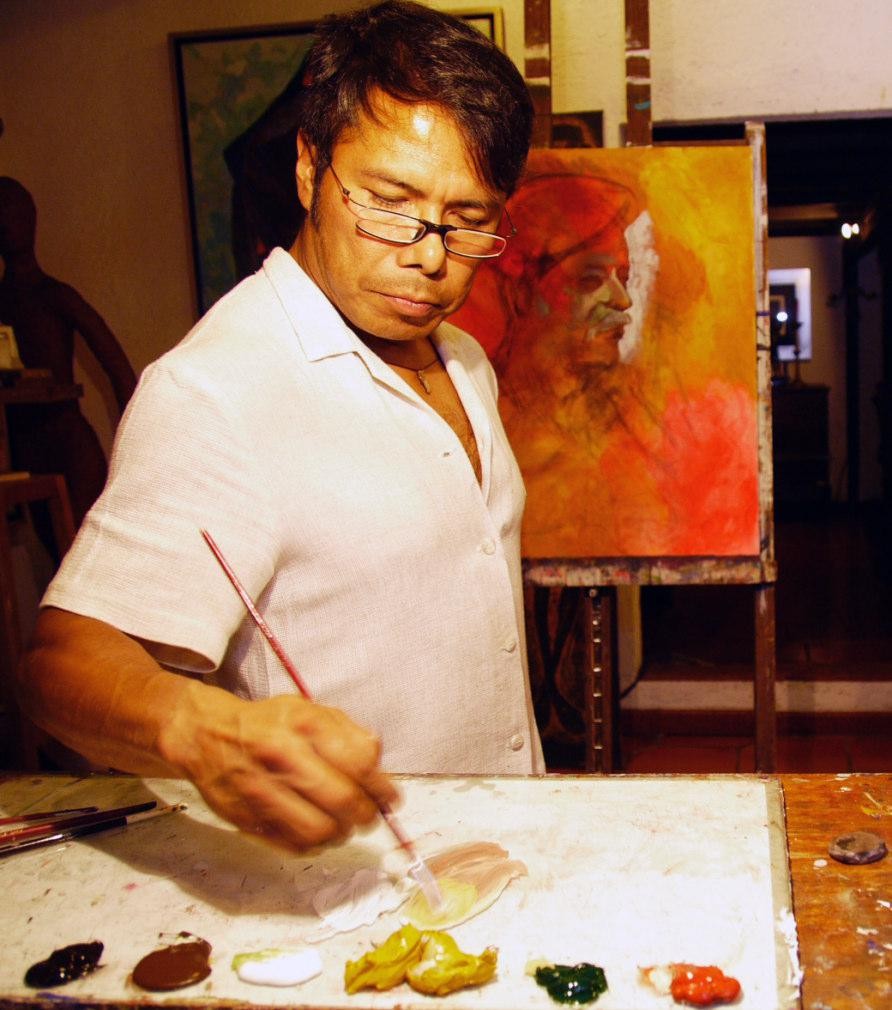


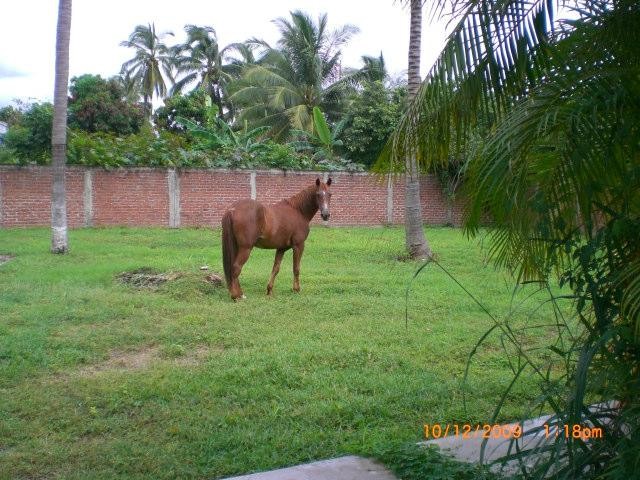
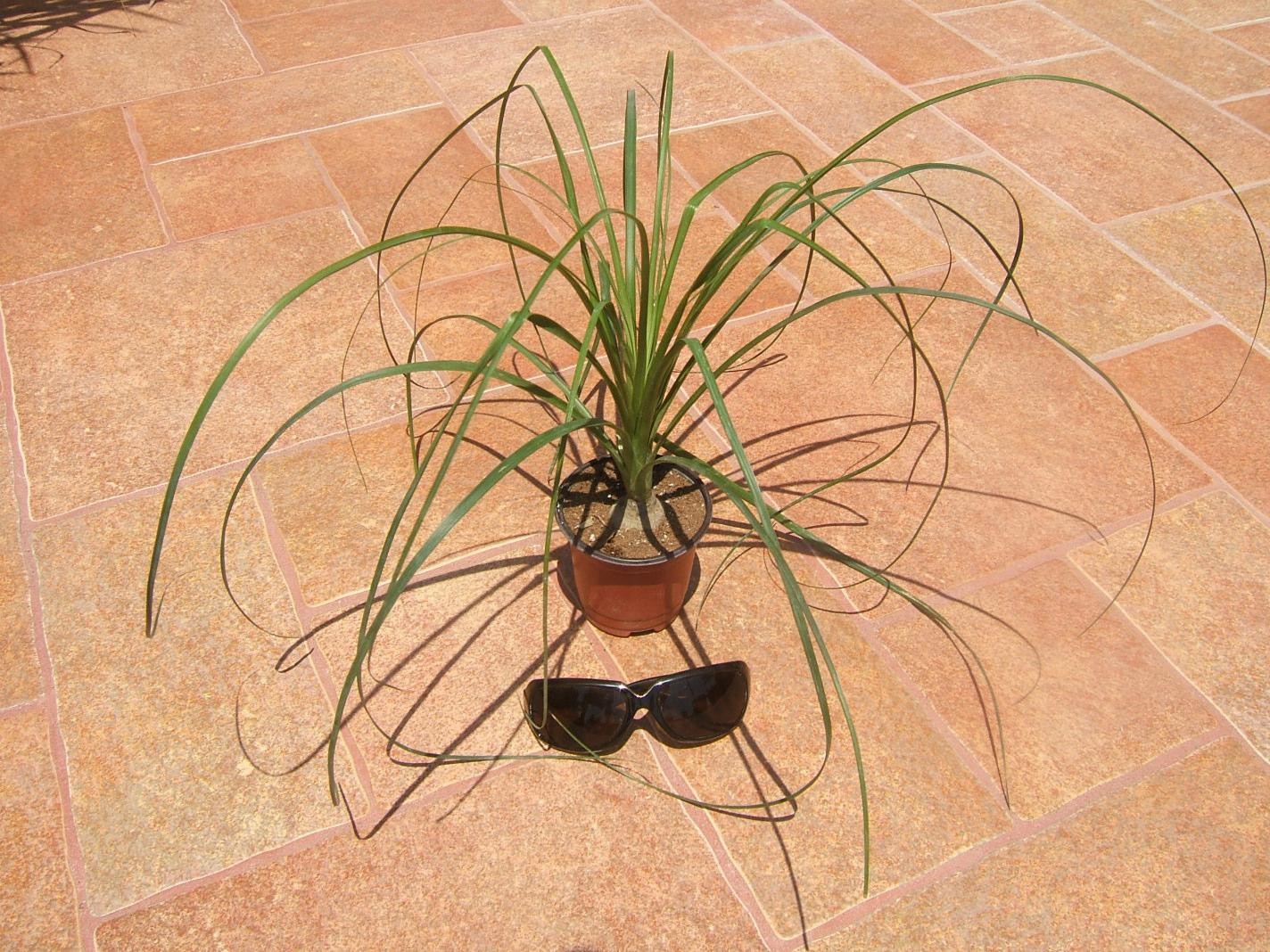
You must be logged in to post a comment.